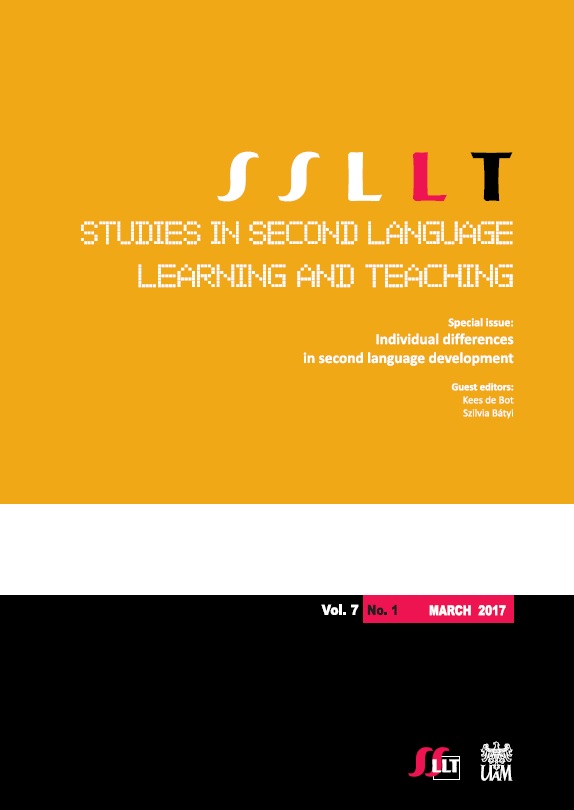Positive and negative emotions underlie motivation for L2 learning
Positive and negative emotions underlie motivation for L2 learning
Author(s): Peter MacIntyre, László VinczeSubject(s): Language and Literature Studies, Foreign languages learning
Published by: Wojskowe Biuro Historyczne im. gen. broni Kazimierza Sosnkowskiego
Keywords: integrative motive; L2 self system; social-contextual model; broaden and build theory; positivity ratio
Summary/Abstract: The role of basic emotions in SLA has been underestimated in both research and pedagogy. The present article examines 10 positive emotions (joy, gratitude,serenity, interest, hope, pride, amusement, inspiration, awe, and love)and 9 negative emotions (anger, contempt, disgust, embarrassment, guilt,hate, sadness, feeling scared, and being stressed). The emotions are correlated with core variables chosen from three well-known models of L2 motivation:Gardner’s integrative motive, Clément’s social-contextual model, and Dörnyei’s L2 self system. Respondents came from Italian secondary schools,and most participants were from monolingual Italian speaking homes. They described their motivation and emotion with respect to learning German in a region of Italy (South Tyrol) that features high levels of contact between Italian sand Germans. Results show that positive emotions are consistently and strongly correlated with motivation-related variables. Correlations involving negative emotions are weaker and less consistently implicated in motivation. The positivity ratio, that is, the relative prevalence of positive over negative emotion,showed strong correlations with all of the motivation constructs. Regression analysis supports the conclusion that a variety of emotions, not just one or two key ones, are implicated in L2 motivation processes in this high-contact context.
Journal: Studies in Second Language Learning and Teaching
- Issue Year: VII/2017
- Issue No: 1
- Page Range: 61-88
- Page Count: 28
- Language: English

